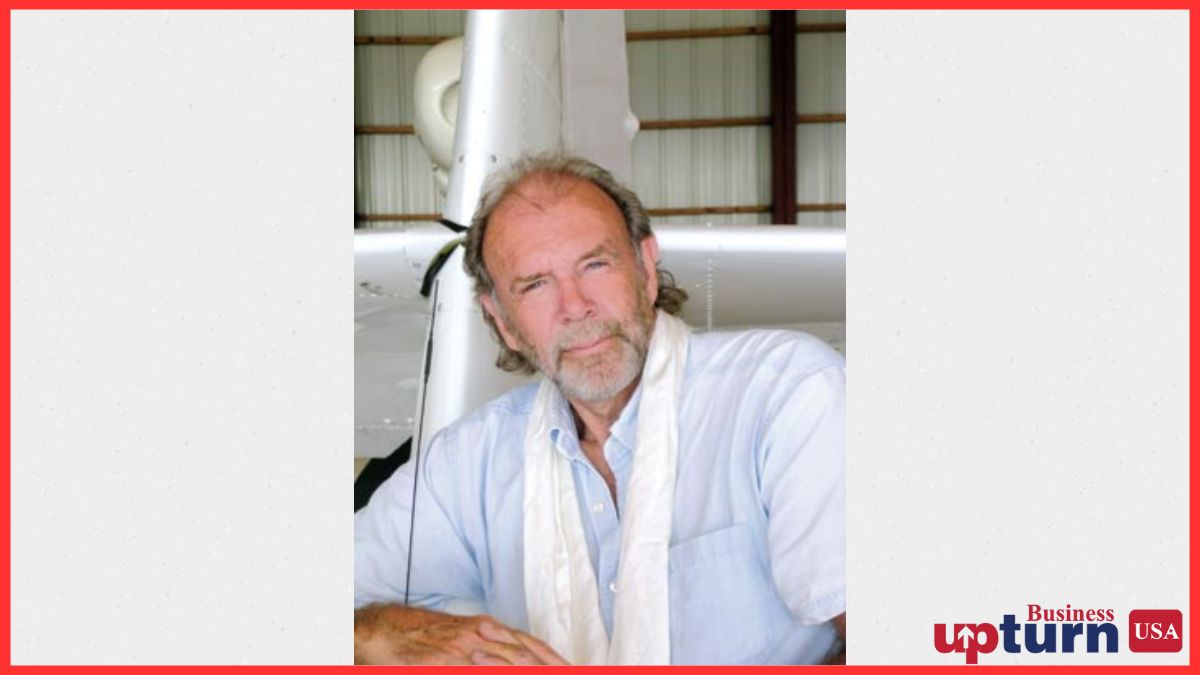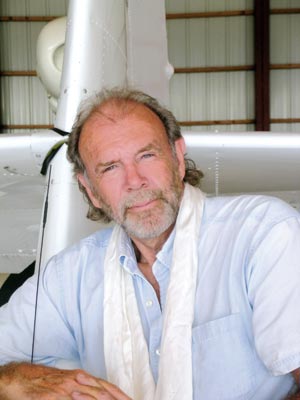
Advertisement
Richard Bach is not merely the author of Jonathan Livingston Seagull; he is a quiet architect of a uniquely American business model—one built on ideas, freedom, and deeply personal storytelling. While not conventionally marketed or corporately branded, Richard Bach’s business model remains one of the most enduring in the American publishing industry. It subtly bridges the spheres of self-help, spirituality, literature, and entrepreneurship. Through niche engagement and philosophical resonance, Bach’s work continues to generate economic value decades after its initial publication, offering an instructive blueprint for creators navigating the modern intellectual economy of the United States.
Richard Bach’s rise through self-published storytelling in the U.S.
In the late 1960s and early ’70s, the American literary landscape was largely dictated by major publishing houses, and spiritual fiction had yet to find a mainstream home. Richard Bach’s business model disrupted this paradigm. His novella Jonathan Livingston Seagull—a story about a seagull who refuses to conform—was rejected by multiple publishers before being picked up by Macmillan in 1970. Despite its unconventional subject and length, the book soared in popularity, eventually selling over 30 million copies worldwide.
This trajectory highlighted a vital shift in the American publishing industry: the power of niche appeal, philosophical themes, and emotional storytelling could break through gatekept markets. While Bach initially went through traditional channels, his approach to content—minimalist in form but expansive in meaning—paved the way for today’s independent publishing in America. Aspiring authors learned that deeply personal and non-commercial narratives could find commercial success, especially when anchored in universal human quests like freedom, self-actualization, and spiritual elevation.
Building value from ideas: Monetising spiritual fiction as intellectual property
Where most authors aimed for mass-market fiction or self-help practicality, Richard Bach’s business model elevated metaphysical fiction into a viable economic vehicle. Jonathan Livingston Seagull, Illusions: The Adventures of a Reluctant Messiah, and One are not just books; they are intellectual property assets that continue to generate revenue across platforms and generations.
Bach’s genius lies in monetising spiritual fiction—a genre often seen as commercially unviable—through long-term licensing agreements, film adaptations, international translations, and periodic re-releases. The 1973 film adaptation of Jonathan Livingston Seagull, scored by Neil Diamond, created another revenue stream, further proving that ideas, when deeply resonant, can generate long-tail economic value.
In doing so, Bach demonstrated that books rooted in personal freedom and spiritual exploration could become scalable IPs in the American publishing industry, effectively blending soul-driven content with commercial longevity.
Leveraging niche emotional content to build a high-impact literary brand
One of the lesser-explored components of Richard Bach’s business model is his precise targeting of niche emotional segments. Unlike generalist self-help books, Bach’s work appeals deeply to those in search of existential purpose—spiritual seekers, minimalists, aviation enthusiasts, and personal growth readers. This multi-niche focus has allowed him to build a literary brand that resonates across different age groups and life stages, particularly among U.S. readers exploring meaning beyond material success.
His books don’t follow traditional plot structures; they follow emotional arcs. They aren’t meant to entertain as much as they are designed to awaken. This emotional intentionality fosters long-term audience retention, especially among American teens and adults seeking content that aligns with self-awareness and transformation.
Richard Bach’s quiet dominance in the U.S. self-help literary market
In the bustling world of American self-help—dominated by loud branding, TED Talks, and social media gurus—Richard Bach’s influence on U.S. readers is refreshingly subtle. He does not rely on conferences, coaching packages, or online summits. Instead, his texts quietly circulate among readers through word-of-mouth, high school classrooms, book clubs, and spiritual circles.
This minimalist approach contrasts sharply with the commercial strategies of more mainstream self-help figures. And yet, Richard Bach’s business model enjoys an unusual kind of longevity. His books are consistently in print, continually recommended, and steadily purchased—even decades later. It’s a model of silent influence that proves relevance doesn’t require a megaphone, only meaningful content.
Direct publishing rights and control: How Richard Bach kept creative ownership in America’s evolving book economy
Another key pillar of Richard Bach’s business model is his ability to maintain creative ownership in book publishing. While initially published through traditional houses like Macmillan and Scribner, Bach has actively sought to retain control over his works—reflecting broader trends in America’s evolving book economy.
In 2014, Bach notably regained the rights to Jonathan Livingston Seagull and released a “complete edition” that included a long-lost fourth part. This act wasn’t just a literary update; it was a declaration of creative sovereignty. In a market increasingly saturated by corporate-owned IP, Bach’s actions mirror what many indie creators and authors in America now aspire to—total control over their artistic legacy.
His ownership decisions forecasted today’s “creator economy,” where individuals prioritize autonomy over high-royalty contracts and value connection over mass distribution.

Revenue through legacy licensing: Film rights, audiobook markets, and the slow monetisation model
The film adaptation of Jonathan Livingston Seagull—despite mixed reviews—proved profitable, especially with the involvement of major talents like Neil Diamond. Licensing the book for film provided a second revenue stream, enabling Bach to diversify beyond print. This was a savvy business move, anchoring his model in multi-platform monetisation.
More recently, the rise of audiobook platforms like Audible and Scribd has revitalised Bach’s earning potential. His works, ideal for reflective listening, perform well in these passive income channels. Unlike fast-burn sales models that rely on new content, Richard Bach’s business model operates on a slow monetisation model, earning quietly but steadily over decades—an approach akin to SaaS-style residual income in the tech world.
The long-tail economics of Richard Bach’s publishing life cycle
Richard Bach’s economic philosophy relies heavily on what marketers call “the long tail.” This theory posits that niche products, sold steadily over time, can generate more value than short-term blockbusters. Bach’s catalogue is the embodiment of this model.
Though he hasn’t produced many new books in recent years, his classics continue to yield royalties, foreign rights deals, audiobook sales, and educational licensing. His minimalistic release strategy combined with deep content resonance ensures that even his lesser-known titles maintain visibility in niche U.S. markets.
In the context of the American publishing industry, this model mirrors software-as-a-service (SaaS) economics: create once, sell forever. It’s a publishing ecosystem where impact, not frequency, drives income.
Teaching American teens to fly: Aviation metaphors as economic psychology
Perhaps no other American author has woven the metaphor of flight into the economic imagination quite like Richard Bach. His books—often featuring literal flying—function as blueprints for personal liberation and economic self-determination. For many U.S. teens and young adults, discovering Bach’s work is a philosophical awakening.
Flight in Bach’s books symbolizes breaking free from the rigid expectations of society—whether in careers, identity, or life paths. This liberation is inherently tied to American ideals of entrepreneurship, freedom, and self-reliance. Bach’s aviation metaphors thus work as covert financial psychology, encouraging readers to “take flight” economically by creating, owning, and monetising their unique ideas.
Beyond book sales: Richard Bach’s intellectual business model for the digital creator economy
In the age of TikTok creators, Substack writers, and indie podcasters, Richard Bach’s business model appears uncannily prescient. He pioneered a kind of intellectual independence that today’s content creators actively pursue. His avoidance of corporate branding, his deep engagement with niche audiences, and his refusal to dilute core messages for marketability mirror the values of the modern digital creator economy.
Bach’s minimalist style and unwavering authenticity offer a prototype for digital entrepreneurs seeking to monetise not just content, but purpose. Today’s American creators—especially Gen Z and Millennial micro-influencers—echo his ethos: produce from the soul, serve a niche, and value long-term loyalty over viral moments.
The digital revival of Bach’s influence in American micro-influencer markets
On TikTok, Instagram, and YouTube, Richard Bach’s influence on U.S. readers is experiencing a quiet renaissance. Creators post animated excerpts from Illusions, quote Jonathan Livingston Seagull in self-help videos, and dissect his themes of freedom, flight, and authenticity in modern formats.
Substack newsletters on philosophy and spiritual growth frequently reference Bach, often positioning him as an originator of spiritual minimalism. This subtle revival demonstrates how legacy content can be reshaped and re-monetised within American micro-influencer markets.
Here, Richard Bach’s business model finds new life—not through flashy endorsements, but through grassroots content curation that aligns with his original values of truth, independence, and self-expression.
Why Richard Bach matters more now than ever: A blueprint for the post-capitalist intellectual economy
In an America increasingly disillusioned by corporate control and economic inequality, Richard Bach’s economic philosophy offers a radical alternative: an economy driven not by capital but by consciousness. His success proves that intellectual property—especially that which promotes inner growth—can be a lasting economic engine.
In many ways, Bach’s career is a case study in post-capitalist value creation. He did not scale a business, build a tech empire, or mass-produce content. He scaled meaning. For American teens, creators, and entrepreneurs alike, this is a blueprint worth studying.
A spiritual capitalist? What Richard Bach unknowingly taught America about monetising freedom
While Bach may have never called himself a capitalist, his work operates as a model of spiritual capitalism—where value is measured not in metrics, but in meaning. His model teaches Americans that you can monetise freedom ethically. You can build wealth from self-knowledge. You can write stories that help people soar, and make a living doing it.
Richard Bach’s business model thus bridges the sacred and the strategic. It is a guide for how to convert spiritual insight into tangible impact—without selling out, and without selling short.
(This article is intended for informational and editorial purposes only. It does not constitute endorsement or promotion of any individual, company, or entity mentioned. Business Upturn makes no representations or warranties regarding the accuracy, completeness, or reliability of the information provided)
